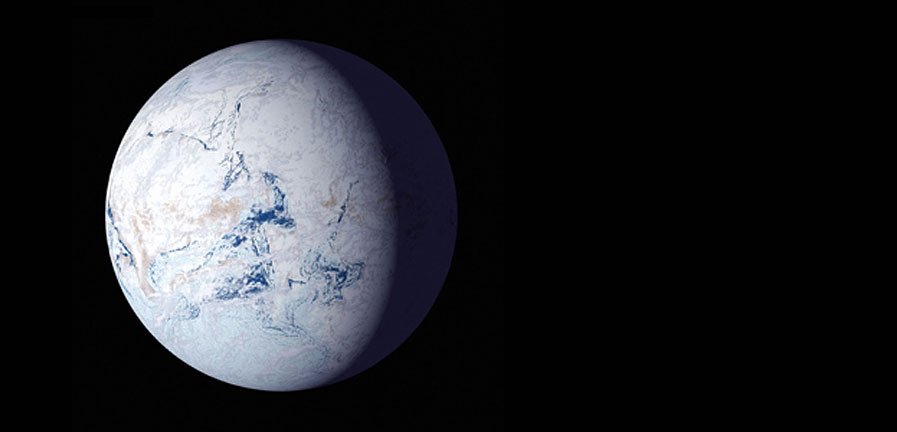Brrr! Earth-Like Alien Planets Could Experience 'Snowball States'

Earth-like planets with severe tilts and orbits could enter abrupt "snowball states," in which entire oceans freeze and surface life cannot survive, according to new research.
Researchers at the University of Washington (UW) have found a new reason why, just because a planet is located in a "habitable zone" — meaning it's close enough to its host star to sustain liquid water — it isn't necessarily habitable. The team found that the axial tilt and orbital dynamics of planets in the habitable zone around "G dwarf" stars like our own sun can lead to "snowball states," which are essentially extreme ice ages.
This new research looked at how a planet's obliquity, or the angle at which a planet's rotation axis tilts, and its orbital eccentricity, a parameter that determines the amount that an orbit deviates from a perfect circle, could affect that planet's potential to be habitable. [How Habitable Zones Around Stars Work (Infographic)]
Previous research suggested that planets in a habitable zone with a sun-like star that had a severe axial tilt or tilting orbit would be warmer, according to the statement. The team's research found that the opposite holds true, which was quite a shock, they said."We found that planets in the habitable zone could abruptly enter 'snowball' states if the eccentricity or the semi-major axis variations — changes in the distance between a planet and star over an orbit — were large or if the planet's obliquity increased beyond 35 degrees," Russell Deitrick, lead author of the new work and a postdoctoral researcher at the University of Bern who completed this research at UW, said in a statement.
Luckily, Earth's axial tilt varies ever so slightly, leaving Earth "a relatively calm planet, climate-wise," co-author Rory Barnes, an astronomer at UW, said in the statement. But, as it pertains to exoplanets, Deitrick "has essentially shown that ice ages on exoplanets can be much more severe than on Earth, that orbital dynamics can be a major driver of habitability and that the habitable zone is insufficient to characterize a planet's habitability," Barnes said.
A planet's position in the habitable zone is typically a major factor in considering whether it may be habitable. However, this new research shows that even if a planet seems Earth-like and is orbiting at the right distance from its star, if "its orbit and obliquity oscillate like crazy, another planet might be better for follow-up with telescopes of the future," Deitrick said.
With this research in mind, orbital dynamics should be considered an important part of determining a planet's habitability, Deitrick added.
Breaking space news, the latest updates on rocket launches, skywatching events and more!
The work will be published in The Astronomical Journal, according to the statement.
Email Chelsea Gohd at cgohd@space.com or follow her @chelsea_gohd. Follow us @Spacedotcom, Facebook and Google+. Original article on Space.com.

Chelsea “Foxanne” Gohd joined Space.com in 2018 and is now a Senior Writer, writing about everything from climate change to planetary science and human spaceflight in both articles and on-camera in videos. With a degree in Public Health and biological sciences, Chelsea has written and worked for institutions including the American Museum of Natural History, Scientific American, Discover Magazine Blog, Astronomy Magazine and Live Science. When not writing, editing or filming something space-y, Chelsea "Foxanne" Gohd is writing music and performing as Foxanne, even launching a song to space in 2021 with Inspiration4. You can follow her on Twitter @chelsea_gohd and @foxannemusic.
